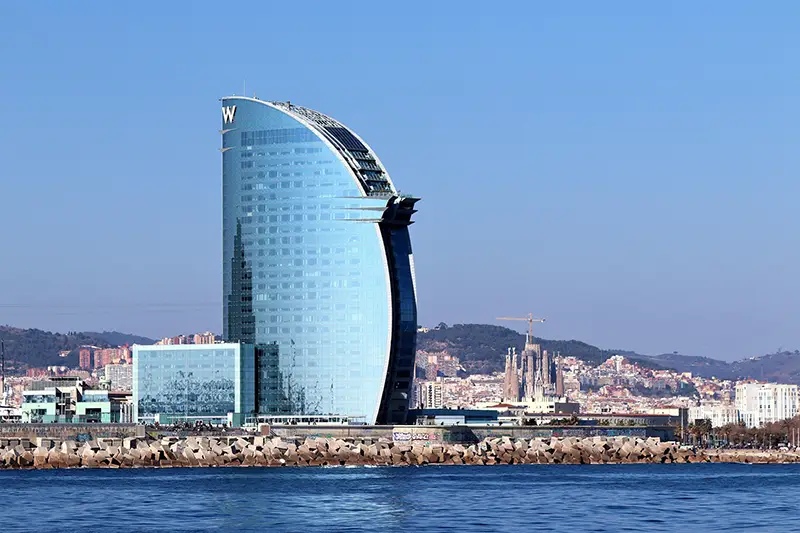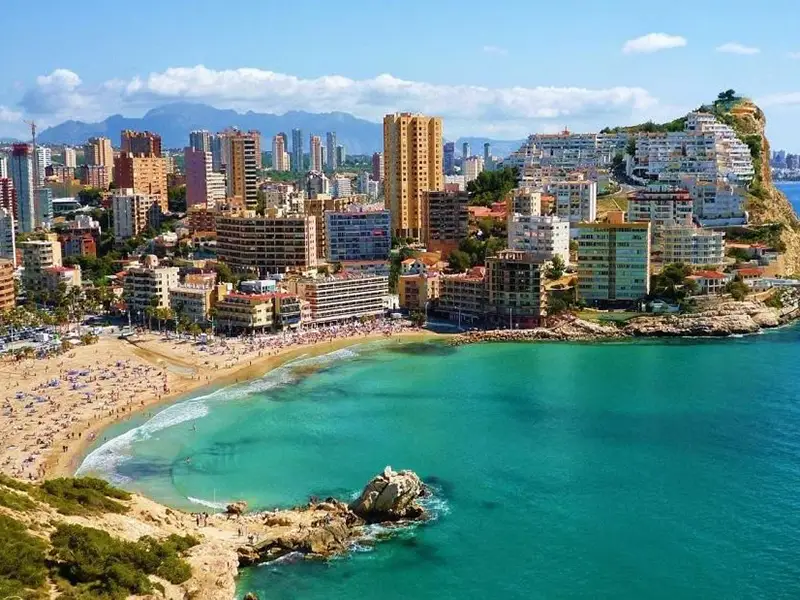Spain is a country with a rich history, culture, beautiful climate and diverse landscapes, it is no wonder that it attracts many people from all over the world who want to live here. From bustling metropolises to quiet coastal towns, the country offers a wide range of locations for a comfortable life. In this review we will look at the best cities in Spain to live in, focusing on those places where buying property will not only be a pleasant but also a profitable investment.
Madrid is the heart of Spain that beats for everyone
Madrid combines the best of tradition and modernity in a way that no other city in Spain can. The historic centre retains the wonderful spirit of ancient Europe – narrow streets, medieval squares, architectural monuments at every turn. At the same time, it is a place where modern infrastructure is actively developed, offering comfortable living conditions. The best of Spain’s cities for living with developed infrastructure provides residents with everything they need: convenient transport systems, modern schools and quality medical facilities.
Comfortable infrastructure for all ages
The city offers comfortable conditions for living in Spain not only for young families, but also for retirees. There is something for everyone: from green parks and museums to convenient shopping centres and modern sports complexes. The city takes care of all residents, offering a wide range of leisure and recreational opportunities. Madrid provides access to quality healthcare services, as well as numerous cultural activities that will help you feel involved in the community. For families with children to live in Spain, the city has all the facilities – convenient nurseries, safe playgrounds and the best schools.
Benefits:
- State-of-the-art medical facilities.
- Highly rated kindergartens and schools.
- Extensive sports complexes and fitness centres.
- Pedestrian and cycle paths in green spaces.
Housing in Madrid: a choice for everyone
Madrid offers accommodation to suit all tastes and budgets. Here you can find both compact apartments in the centre and spacious houses in quiet suburban areas. It is particularly pleasing that Spanish cities with low housing prices include some areas of Madrid, where prices remain quite affordable compared to other European capitals. Thanks to this variety of offers, everyone can choose a suitable option, regardless of budget.
Estimated prices:
- Apartments in the city centre: from 3000 to 5000 euros per square metre.
- Housing in the suburbs: from 1800 to 3000 euros per square metre.
- Rental flats: from 1000 euros per month in central areas.
Barcelona – the city of dreams by the sea
 Barcelona offers a good climate, making it one of the best cities in Spain to live in. Winters are warm and summers are bright and sunny, which is ideal for those who want to enjoy nature all year round. The Mediterranean Sea creates a unique microclimate that favours comfortable living and maintaining an active lifestyle. No sudden temperature fluctuations – Barcelona is literally made for warm sun lovers.
Barcelona offers a good climate, making it one of the best cities in Spain to live in. Winters are warm and summers are bright and sunny, which is ideal for those who want to enjoy nature all year round. The Mediterranean Sea creates a unique microclimate that favours comfortable living and maintaining an active lifestyle. No sudden temperature fluctuations – Barcelona is literally made for warm sun lovers.
Cultural attractions and active life
In Barcelona, culture lives and breathes on every corner. World-class museums, endless festivals, the best theatres, street performances – all this makes the city one of the most comfortable places to live in Spain for those who appreciate art and culture. Barcelona never sleeps, and there is always something interesting for people of all ages – whether they are young couples, adults or seniors. Here, people easily immerse themselves in the atmosphere of eternal festivities.
Beach life and property
The Spanish city is also known for its magnificent beaches, which stretch for many kilometres. Whether you are looking for a quiet place away from the crowds or a lively urban coastline, Barcelona has it all. Properties by the sea are particularly popular: you can find cosy flats overlooking the ocean or villas that are close to the beach. This variety allows you to choose the most suitable option for permanent residence or holiday.
Valencia – a combination of nature and modernity
Valencia is an ideal garden city with a huge number of parks and green areas, and is considered one of the best places to live in Spain. Parks like Turia stretch for kilometres, offering residents the opportunity to walk, exercise or simply relax in nature. Valencia’s eco-friendliness is what sets it apart from many other metropolises: residents here value nature and do their best to preserve it.
Green spaces and parks:
- Turia Park is the city’s largest green space, ideal for walking and jogging.
- Monforte Gardens is a cosy place to relax.
- Albufera is a national park with beautiful lakes and protected areas.
Developed infrastructure and housing availability
The city’s infrastructure is another factor that makes it attractive. The transport system works like clockwork: buses, trams and metro make it easy to get to any part of the city. It is convenient to live, work, study and have fun here. As one of the best cities to live in Spain, Valencia provides all the necessary amenities: from modern schools and hospitals to cultural and sports facilities.
Cost of living and housing
Valencia is characterised by its affordable housing prices. Whilst housing costs can be quite high in major cities such as Madrid and Barcelona, lists of places in Spain with low prices often include Valencia. Here you can find both small flats and spacious houses at a reasonable rate. The cost of living in Valencia is also lower, making it a great place for those who want to enjoy high quality accommodation without overpaying for it.
Approximate prices for accommodation in Valencia:
- Flats in the centre: from 2000 to 3000 euros per square metre.
- Flats in the suburbs: from 1500 euros per square metre.
- Average rental prices: from 700 euros per month.
Taxes and additional costs when buying a property:
- Property transfer tax: about 10% of the property value.
- Notary and registration costs: between 1,500 and 3,000 euros.
- Utilities: 100-150 euros per month on average.
Conclusion
 Each of Spain’s best cities to live in has its own characteristics and advantages. Madrid attracts with its versatility and combination of history and modernity, Barcelona delights with culture and the sea, and Valencia offers a harmonious combination of nature and city. Choosing the ideal location depends on individual preferences and priorities.
Each of Spain’s best cities to live in has its own characteristics and advantages. Madrid attracts with its versatility and combination of history and modernity, Barcelona delights with culture and the sea, and Valencia offers a harmonious combination of nature and city. Choosing the ideal location depends on individual preferences and priorities.
 en
en  ru
ru  de
de  ar
ar  es
es  nl
nl  hi
hi  fr
fr  it
it  pt
pt  el
el 









